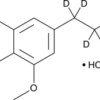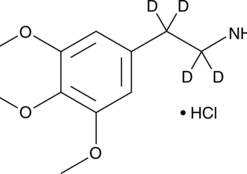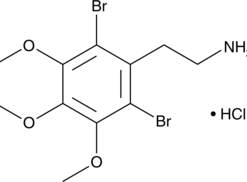N-Hydroxy MDMA (Hemioxalate): A Comprehensive Guide
Introduction to N-Hydroxy MDMA (Hemioxalate)
N-Hydroxy MDMA (hemioxalate) is a derivative of 3,4-methylenedioxy-N-methylamphetamine (MDMA), commonly known as “Ecstasy.” MDMA is renowned for its psychoactive effects, particularly in recreational settings, as well as its potential therapeutic uses, especially in the treatment of PTSD (Post-Traumatic Stress Disorder). N-Hydroxy MDMA, which features a hydroxyl group (-OH) at the nitrogen atom of the MDMA molecule, plays a vital role in scientific research, particularly in the study of MDMA’s metabolism and pharmacology.
The hemioxalate form refers to the specific salt form of the compound, which includes oxalate ions to stabilize the molecule for research purposes. As scientific understanding of MDMA’s therapeutic potential continues to evolve, the demand for reliable and accurate reference compounds like N-hydroxy MDMA (hemioxalate) grows. In this article, we’ll explore the structure, synthesis, pharmacological properties, and applications of N-hydroxy MDMA, as well as where to buy it for research purposes in various regions such as Australia, the UK, Europe, and the USA.
Chemical Structure and Properties of N-Hydroxy MDMA (Hemioxalate)
Molecular Structure
The molecular formula of N-hydroxy MDMA (hemioxalate) is C11H15NO3·C2H2O4. This compound retains the basic structure of MDMA, with a methylenedioxy group attached to the benzene ring and an ethylamine side chain. However, a key modification in N-hydroxy MDMA is the introduction of a hydroxyl group (-OH) at the nitrogen atom of the ethylamine chain. This hydroxylation alters the compound’s interaction with receptors and enzymes in the body, affecting its metabolic profile.
In the hemioxalate form, the compound is stabilized by oxalate ions, which provide greater solubility and purity. The oxalate salt form is commonly used in laboratories to ensure stability during storage and handling.
Key Functional Group: Hydroxylation
The addition of a hydroxyl group at the nitrogen position of MDMA is a significant chemical modification. This functional group is often involved in altering the pharmacokinetics and metabolism of the compound. Hydroxylation typically results in changes to the compound’s interactions with metabolic enzymes and receptor sites, which may affect its potency and toxicity compared to the parent compound, MDMA.
Synthesis of N-Hydroxy MDMA (Hemioxalate)
The synthesis of N-hydroxy MDMA (hemioxalate) involves several key steps in organic chemistry, primarily focused on introducing the hydroxyl group to the nitrogen atom and the formation of the hemioxalate salt. Here is a general overview of the synthetic process:
1. Preparation of MDMA Derivative
The first step in synthesizing N-hydroxy MDMA is obtaining or synthesizing the precursor molecule, MDMA, which contains the methylenedioxy group attached to the aromatic ring and the ethylamine side chain.
2. Hydroxylation Reaction
The hydroxylation process is typically carried out by using reagents that introduce the hydroxyl group at the nitrogen atom of the ethylamine chain. This step often involves the use of catalysts or oxidizing agents that selectively add the hydroxyl group to the nitrogen atom while avoiding other unwanted side reactions.
Hydroxylation can be achieved through various methods, such as using reagents like hydrogen peroxide or other selective oxidants.
3. Formation of the Hemioxalate Salt
Once the hydroxylation reaction is complete, the resulting N-hydroxy MDMA undergoes neutralization with oxalic acid to form the hemioxalate salt. The oxalate ions help to stabilize the molecule, ensuring that the compound remains stable, soluble, and easy to handle in laboratory settings.
Pharmacological Properties of N-Hydroxy MDMA (Hemioxalate)
N-Hydroxy MDMA, a derivative of MDMA, shares similar pharmacological properties but differs due to nitrogen hydroxylation. Its primary effects may involve serotonergic, dopaminergic, and norepinephrine activity. Researchers are still exploring its precise pharmacological effects.
1. Serotonergic Activity
MDMA is known for its strong effects on the serotonin system. It promotes the release of serotonin in the brain, leading to feelings of euphoria, emotional warmth, and empathy. It is believed that N-hydroxy MDMA, due to its similar structure, may also affect serotonin release, though the exact mechanisms and the extent of the effects are not fully understood. The hydroxylation at the nitrogen atom may alter the compound’s affinity for serotonin receptors, potentially modifying its psychoactive effects.
2. Dopamine and Norepinephrine Effects
Like MDMA, N-hydroxy MDMA is likely to affect dopamine and norepinephrine release in the brain, contributing to its stimulant properties. However, the altered molecular structure may influence how it interacts with dopamine and norepinephrine transporters, affecting the potency and duration of the stimulant effects.
3. Metabolism and Detoxification
One of the primary reasons for synthesizing N-hydroxy MDMA is to understand its metabolism and how it may differ from the parent compound, MDMA. Hydroxylation at the nitrogen atom may affect how the body metabolizes the compound, possibly leading to different rates of clearance and altered pharmacokinetics. This makes N-hydroxy MDMA a valuable tool in studying the breakdown of MDMA and its derivatives in the liver and other tissues.
4. Toxicology
As with other MDMA derivatives, N-hydroxy MDMA has the potential to cause adverse effects such as hyperthermia, dehydration, serotonin syndrome, and elevated heart rate. The toxicity of N-hydroxy MDMA is still being evaluated, but researchers believe that the hydroxylation at the nitrogen position may reduce some of the toxic effects of MDMA while potentially introducing new risks.
Applications of N-Hydroxy MDMA (Hemioxalate) in Research
N-hydroxy MDMA (hemioxalate) has important applications in various research fields, especially in pharmacology, neuroscience, and toxicology.
1. Study of MDMA Metabolism
One of the primary applications of N-hydroxy MDMA is in studying the metabolism of MDMA and its derivatives. Researchers use N-hydroxy MDMA to compare its metabolism with MDMA, studying how hydroxylation affects drug metabolism. This research helps understand how MDMA-like substances are processed in the body. It may aid in designing safer and more effective compounds.
2. Investigation of Psychoactive Effects
Researchers study how N-hydroxy MDMA affects serotonin, dopamine, and norepinephrine systems to understand its psychoactive effects. Studying its interactions with neurotransmitter systems helps scientists understand how MDMA-like compounds impact the brain. This research is crucial for developing treatments for mood disorders and PTSD.
3. Toxicological Studies
N-hydroxy MDMA (hemioxalate) can also serve as a useful reference in toxicological studies. By examining its effects in animal models, researchers can determine the potential risks and side effects associated with its use. This information is essential for assessing the safety of MDMA derivatives and developing safer alternatives for therapeutic use.
Where to Buy N-Hydroxy MDMA (Hemioxalate)
For researchers interested in purchasing N-hydroxy MDMA (hemioxalate), it is important to source the compound from reputable chemical supply companies that specialize in high-quality research chemicals. Below are some options for buying N-hydroxy MDMA (hemioxalate) in various regions:
Buy N-Hydroxy MDMA in Australia
In Australia, N-hydroxy MDMA (hemioxalate) is available through specialized chemical suppliers that cater to academic and scientific research. Shipping options and availability may vary, so it is important to contact suppliers to inquire about purchasing this compound for research purposes.
Buy N-Hydroxy MDMA in the UK
UK-based researchers can buy N-hydroxy MDMA (hemioxalate) from leading chemical distributors who provide pure compounds for pharmaceutical and forensic research. Many suppliers offer international shipping, making it easy for scientists to access this compound for their studies.
Buy N-Hydroxy MDMA in Europe
Across Europe, chemical supply companies offer N-hydroxy MDMA (hemioxalate) for sale to academic institutions, laboratories, and research facilities. Countries like Germany, France, and the Netherlands have reputable suppliers who provide high-quality chemicals for research purposes.
Buy N-Hydroxy MDMA in the USA
In the USA, several well-known scientific supply companies offer N-hydroxy MDMA (hemioxalate). Trusted suppliers, such as Sigma-Aldrich and Fisher Scientific, provide access to this compound for use in pharmaceutical and forensic research.
Conclusion
N-Hydroxy MDMA (hemioxalate) helps researchers understand MDMA metabolism, its pharmacological effects, and its toxicological profile. This compound’s unique structure provides insights into MDMA-like substances for recreational and therapeutic research. However, studying N-hydroxy MDMA improves knowledge of MDMA metabolism and enhances the safety of MDMA-based therapies.
To buy N-hydroxy MDMA (hemioxalate) for research, choose reputable suppliers offering high-quality, research-grade products.
| N-hydroxy MDMA (hemioxalate) | 1Gram, 5Grams |
|---|
Be the first to review “N-Hydroxy MDMA (hemioxalate)” Cancel reply
Related products
MDMA Research Chemicals
MDMA Research Chemicals
MDMA Research Chemicals
MDMA Research Chemicals
MDMA Research Chemicals
MDMA Research Chemicals
MDMA Research Chemicals





Reviews
There are no reviews yet.